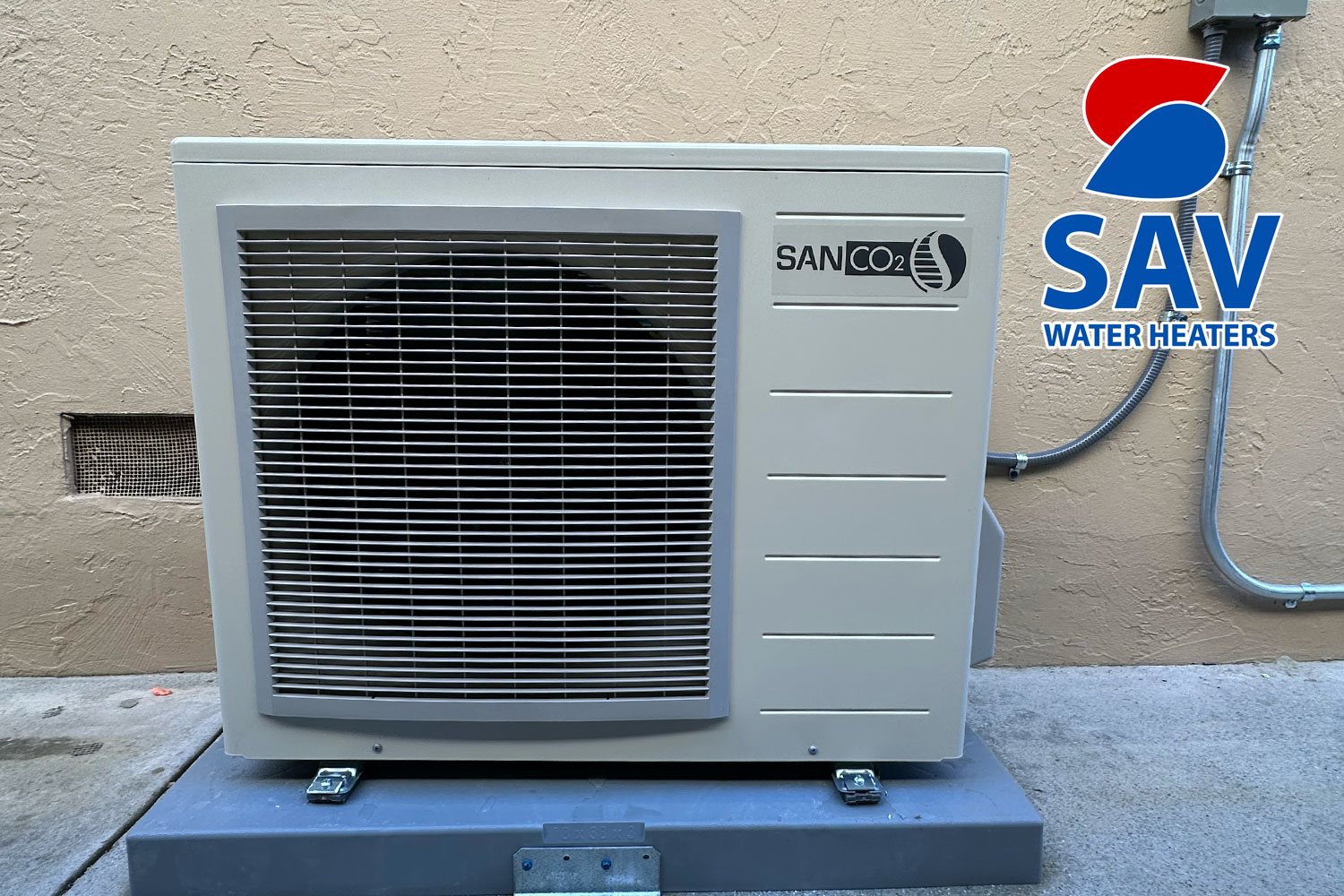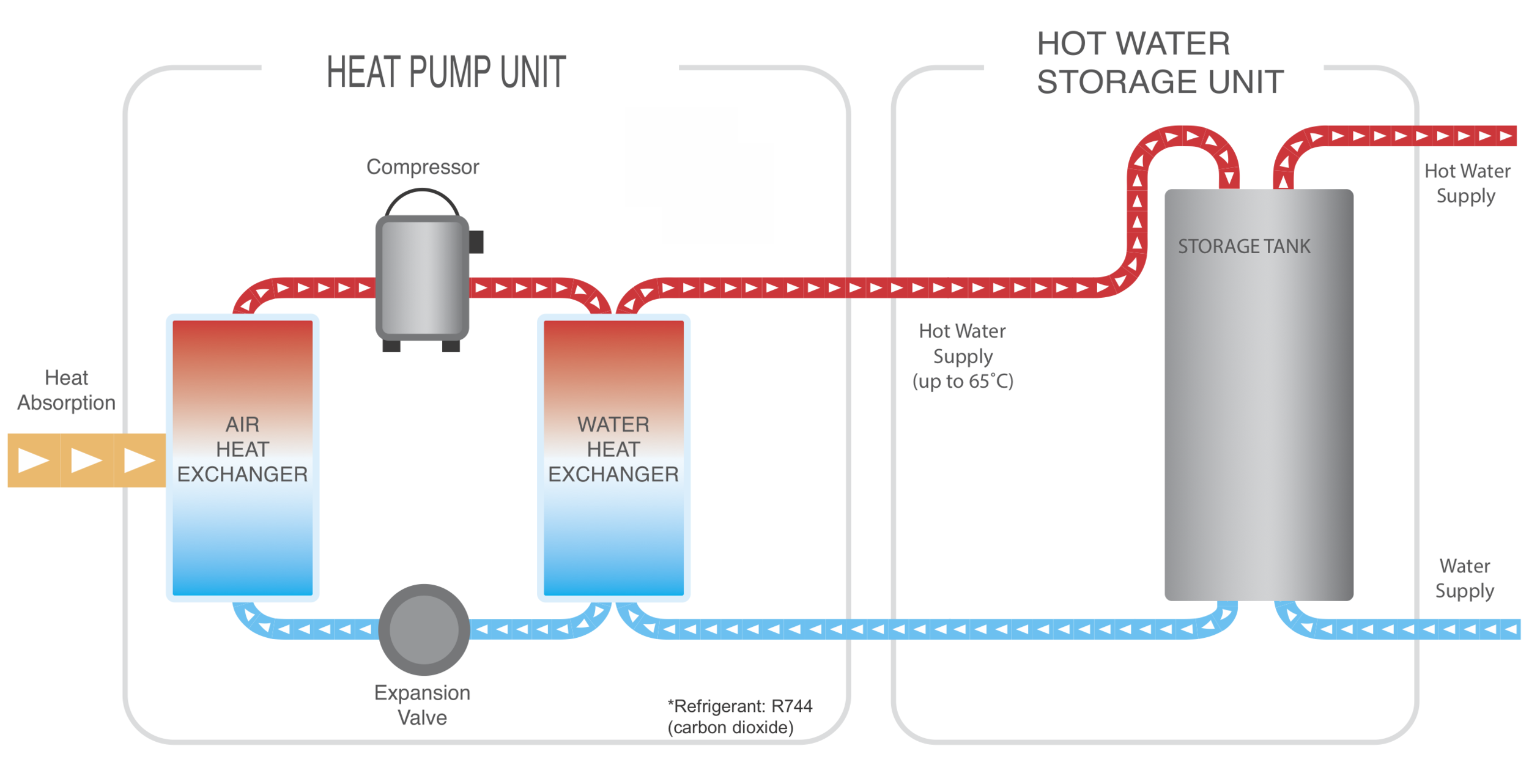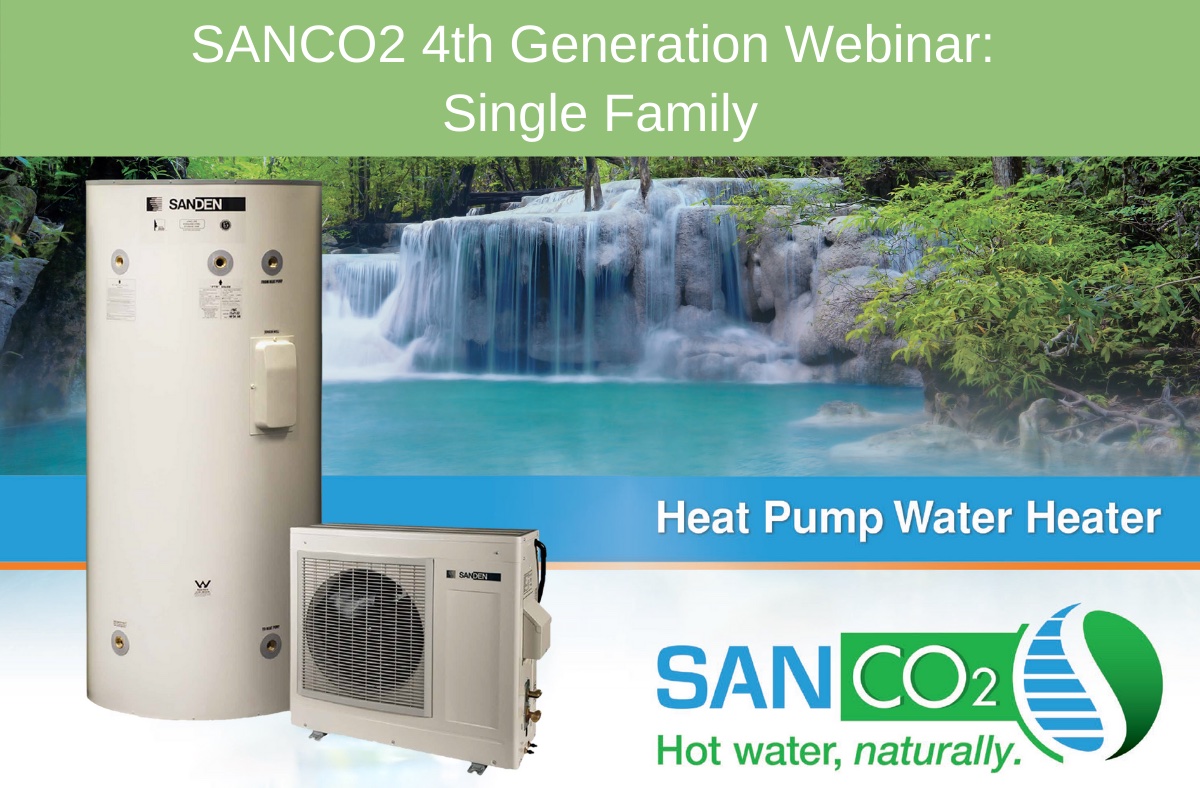Seriously, it's time to rethink how we get hot water. In a world where everyone's thinking about going green and saving money, водонагреватели SANCO2 - it's like a breath of fresh air. Imagine technology that uses CO2 heat pumps. Sounds like science fiction, right? But it's real, and it's changing the game in the water heater market.
If you're like me and tired of those ever-increasing electric bills, and want to do your bit for the environment, then SANCO2 is for you. These guys have come up with something truly cool: super energy-efficient, eco-friendly, and still powerful water heaters. They don't just heat water; they do it smartly, efficiently, and most importantly, responsibly.
 In this article, I want to tell you everything you need to know about SANCO2 water heaters. We'll dive into their amazing technology, the pros and even cons, look at where you can use them, and compare them to the usual systems. And most importantly, we’ll figure out why SANCO2 isn't just a trend, but a real step into the future of hot water supply.
In this article, I want to tell you everything you need to know about SANCO2 water heaters. We'll dive into their amazing technology, the pros and even cons, look at where you can use them, and compare them to the usual systems. And most importantly, we’ll figure out why SANCO2 isn't just a trend, but a real step into the future of hot water supply.
Today you'll discover:
- Exactly how SANCO2 manages to heat water with CO2 – it's technology that will wow you.
- Why everyone's raving about their energy efficiency and eco-friendliness – real numbers and facts, no fluff.
- Where you can install these чудо (miracle!) water heaters – from apartments to factories.
- Why they’re better than traditional water heaters and other heat pumps – a comparison that will convince you.
- What to think about if you’re considering getting one – climate, needs, budget, the whole shebang.
- How they’re installed and maintained – the nitty-gritty.
- And the burning question – is it worth it? We’ll look at the savings and government incentive programs in the US.
SANCO2 Magic: How CO2 Does What Others Can't
So, what’s the secret sauce with SANCO2? They use the heat pump principle. You might have heard of it. But the real game-changer is the refrigerant – carbon dioxide (CO2). Yep, that’s right, CO2! Sounds like greenhouse gas villain, but here it's the energy efficiency hero. That's the beauty of it.
Here’s how it works in simple terms:
- Air is our heat source: A fan sucks in ordinary air from outside (or your utility room) and sends it to the evaporator.
- CO2 "freezes in reverse": Liquid CO2 inside the evaporator absorbs heat from the air and… evaporates. Even if it's not exactly summer outside, CO2 is a champ at pulling heat from cold air.
- The compressor "pumps up" the temperature: CO2 in gas form goes into the compressor, which squeezes it to crazy high pressure. And here’s the magic – the temperature of the CO2 skyrockets! SANCO2 uses some seriously cool compressors made just for these CO2 tricks.
- Heat goes into the water, CO2 gets back to work: Hot, high-pressure CO2 heads to the condenser (think of it as a heat exchanger), where it gives off its heat to the water flowing through your hot water pipes. Then the CO2 turns back into liquid.
- Cycle complete, let’s go again: Liquid CO2 goes through a valve, where its pressure and temperature drop, and it’s ready for another round in the evaporator. And so on, round and round, until your water’s as hot as you want it.
Here are a few key takeaways about SANCO2 technology:
 CO2 – the refrigerant of the future: This isn’t your grandpa’s freon. CO2 (or R744 if you want to get technical) is completely safe for the ozone layer and has almost no global warming impact (GWP=1). Unlike those old refrigerants that were greenhouse gases on steroids.
CO2 – the refrigerant of the future: This isn’t your grandpa’s freon. CO2 (or R744 if you want to get technical) is completely safe for the ozone layer and has almost no global warming impact (GWP=1). Unlike those old refrigerants that were greenhouse gases on steroids.- Boiling hot water, no electric elements needed: SANCO2 can heat water almost to boiling (77°C or 170°F), and they don’t need any electric heating elements to do it. Just the magic of CO2 and an efficient heat pump. This isn’t just lukewarm water; this is hot water, full stop.
- Energy from air, efficiency through the roof: These water heaters deliver a COP (Coefficient of Performance) of up to 4 and even higher! That means for every kilowatt of electricity they use, they produce 4 times more heat than a regular electric heater. Savings? Astronomical.
- Cold weather? No sweat: SANCO2 works great even when it’s freezing outside, without losing efficiency (within reason, depends on the model). So even if you have harsh winters, it’s not a problem.
Caption: How a SANCO2 water heater works – CO2 circulation and heat transfer in action.
SANCO2 Pluses: Why People Are Choosing Them
SANCO2 water heaters are like a “combo deal” of advantages. Here’s why they’re getting so popular:
- Savings that break records: Forget about electricity bills that make you cringe. With SANCO2, you’ll spend 60-80% less on hot water than you used to. Especially if your electricity rates are sky-high. The savings are huge, and it's not just talk, it's real.
- Eco-friendly is more than just a buzzword: By choosing SANCO2, you're making a real contribution to protecting nature. CO2 refrigerant – safe and “green.” Energy efficiency – top-notch. The result – less harm to the planet, smaller “carbon footprint.” For those who are “pro-eco,” it’s the perfect choice.
- Hot water – seriously hot: No more compromises! SANCO2 gives you real boiling hot water (up to 77°C), no hassle. Need hot water for laundry, dishwasher, or whatever – you got it, always on tap.
- Reliability like a Swiss watch: These water heaters are built to last. Quality parts, simple design – they last a long time and rarely break down. CO2 refrigerant is stable, so no nasty surprises.
- Quietness that would make a library jealous: Modern SANCO2s operate almost silently. Not like an old tractor, but like a regular refrigerator. Peace and quiet in your home guaranteed.
- The government’s on board with energy efficiency too: In the US and elsewhere, there are support programs for energy-efficient tech. Install SANCO2 – you might qualify for tax breaks, rebates, subsidies. It's like a bonus from the government for making the right choice. Worth checking out what you're entitled to!
Where SANCO2 Feels Right at Home
SANCO2 isn’t some niche gadget. They fit perfectly in all sorts of situations:
- For homes, for families: Private houses, apartments, townhouses – SANCO2 will be great everywhere. They’ll cut down water bills and boost comfort. Models come in different sizes for any family size.
- For business, for work: Restaurants, offices, stores, salons, hotels – SANCO2 will help slash hot water expenses on a commercial scale. Performance is top-notch, reliability too.
- For industry, for needs: Where really hot water is a must (like factories, workshops) – SANCO2 can also step up. Sometimes they even replace boilers if the temperature is high enough.
- Even for apartment buildings, but not everywhere yet: Small apartment buildings can also appreciate SANCO2. You can install several in "cascade" so everyone gets enough hot water. But for huge skyscrapers, you still need other solutions.
SANCO2 vs. Everyone Else: An Honest Showdown
Let's see how SANCO2 stacks up against the “competition”:
SANCO2 vs. Electric Water Heaters (Traditional):
- Energy Efficiency: SANCO2 – champions (COP is way higher).
- Water Bills: SANCO2 – major savings.
- Eco-Friendliness: SANCO2 – much “greener.”
- Price: SANCO2 – more expensive upfront, but pays off fast.
- Water Temperature: SANCO2 – hot water, no problem.
SANCO2 vs. Gas Water Heaters:
- Energy Efficiency: SANCO2 – can be even better (if you count the whole gas production and delivery chain).
- Water Bills: SANCO2 – might be cheaper (especially if gas prices keep rising).
- Eco-Friendliness: SANCO2 – way cleaner (no exhaust fumes).
- Price: SANCO2 – pricier upfront, but fuel savings and incentives can even it out.
- Installation: SANCO2 – simpler (no gas or chimney needed).
SANCO2 vs. Heat Pumps (Freon-based, Traditional):
- Energy Efficiency: SANCO2 – often better, especially in cold weather and for high heat.
- Refrigerant: SANCO2 – eco-neutral CO2, traditional – freons (greenhouse gases).
- Water Temperature: SANCO2 – hotter.
- Cold Weather Performance: SANCO2 – better adapted to cold.
- Price: SANCO2 – usually more expensive (more complex tech).
Things to Consider If You’re Sold on SANCO2
Decided SANCO2 is for you? Awesome! Here are a few things to keep in mind before you buy and install:
- Climate Matters: Although SANCO2 is "frost-resistant," average winter temperatures and the coldest snaps do affect model choice and maybe the need for a backup heater for the coldest days. In seriously cold areas, you might want a “beefier” model or a hybrid system.
- How Much Hot Water Do You Need? How many people in your family, how often you shower, do laundry, dishes – all this decides the size of the system you need. Better to go a little “overkill” than end up “bathing in lukewarm water.”
- Where Will You Put It? The SANCO2 heat pump needs air to work. You can put it in a ventilated utility room or outdoors. You need free space for installation and maintenance. Noise – something to consider too. They’re quiet, but there’s still some sound.
- Money – The Big Question: SANCO2 is pricier upfront, no getting around it. But you gotta look at the total cost of ownership. How much will you save on electricity, what rebates can you get? Payback – that’s the key. In most cases, it’s there and pretty significant.
- Who’s Gonna Install It? SANCO2 installation is pro territory. You’re dealing with heat pumps and high-pressure CO2 – not a DIY project. Find certified installers and make sure service is available in your area.
SANCO2 Installation and “Care and Feeding”
Installing SANCO2 is not like plugging in a toaster. You need pros who know heat pumps and CO2 systems inside out. Installation steps in a nutshell:
- Indoor unit (tank), outdoor unit (heat pump) – separate blocks.
- Pipes – special high-pressure and water pipes. Connect all the blocks.
- Electricity – wire it up properly.
- CO2 – fill the system up. Needs special gear and know-how, pressure’s high!
- Setup, startup, checkup. Everything’s gotta run like clockwork.
- Leak check, efficiency check. Make sure it’s all good.
SANCO2 maintenance is pretty chill. Once a year (or every couple of years) – call a tech for a checkup. They’ll look at:
- Compressor, fan – how they’re doing.
- CO2 pressure – is it normal?
- Connections – are they tight?
- Radiators – clean?
- Automation – no “glitches”?
- Efficiency – still top-notch?
Regular checkups – guarantee long and trouble-free operation for your SANCO2.
SANCO2 Economics: Is It Worth Paying More?
Yep, SANCO2 is more expensive upfront than regular water heaters. But let's look at the numbers. Payback depends on:
- Electricity prices in your area. Higher prices, faster payback for SANCO2.
- Your hot water usage. More usage, bigger savings.
- Climate. In moderate and cold climates, savings are more noticeable (water heating is a big expense).
- Government rebates. Rebates and tax credits can seriously speed up payback.
In the US, there are federal and state “perks” for those who install energy-efficient heat pumps like SANCO2. The Energy Efficient Home Improvement Credit can cover a big chunk of the installation cost. Plus, local programs – free money is still money. Check out Energy.gov and DSIRE (dsireusa.org) for info.
Sometimes, with savings and rebates combined, SANCO2 can pay for itself in just a few years. And after that – pure savings and “green” bonuses. In the long run, it’s a smart investment and freedom from energy price rollercoaster.

Conclusion: SANCO2 – It's Not Just a Water Heater
SANCO2 is future tech that’s here today. Super-efficient, eco-friendly, powerful, and reliable. They're changing how we think about hot water in the 21st century.
Yeah, the initial outlay is higher than for a regular water heater. But if you look at the long-term picture, calculate the savings, add the eco-bonuses and government support, SANCO2 turns out to be a seriously good deal. And, most importantly, – responsible.
So, if you're planning to replace your water heater or building a new home, think about SANCO2. It's a smart choice for you and the planet. The future is with tech like this, and it’s already here.
Caption: A modern SANCO2 water heater – for those who value efficiency and ecology.